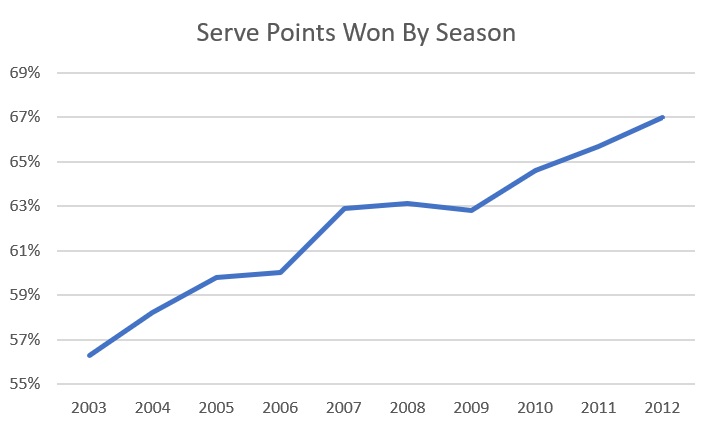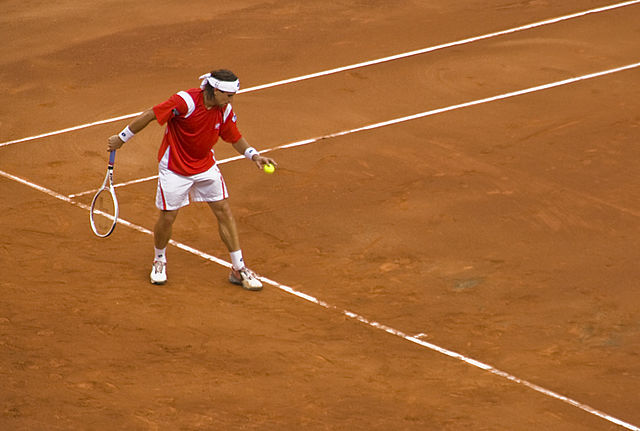
In 2022, I’m counting down the 128 best players of the last century. With luck, we’ll get to #1 in December. Enjoy!
* * *
David Ferrer [ESP]Born: 2 April 1982
Career: 2002-19
Plays: Right-handed (two-handed backhand)
Peak rank: 3 (2013)
Peak Elo rating: 2,219 (4th place, 2012)
Major singles titles: 0
Total singles titles: 27
* * *
Like it or not, the 21st century has not been an easy time to be an old-school, clay-court grinder. Part of the problem is that whenever Rafael Nadal turns up at a clay-court event, he tends to win. Beyond that, the compressed European clay season–which includes the speedier-playing conditions in Madrid–just isn’t long enough that a dirtballing standout is guarantee to place near the top of the rankings.
This wasn’t entirely clear in the first few years of the 2000s, but if it had been, it would’ve spelled doom for David Ferrer. For one thing, he was five-feet-nine-inches tall–respectable for a ball kid or a Rochus brother, but puny for a tour-level player. More to the point, the combination of his size and the clay-court game he developed in Valencia just didn’t play on hard courts.
Ferrer broke into the top 50 in 2004, when he was 22 years old. It was not because of his hard-court prowess. He won just 3 of 13 tour-level matches on hard that season, one of them against a wild card and another against a qualifier. He made some progress the following year, reaching the semi-finals in Miami, but only because Xavier Malisse cursed a linesman and was defaulted to give Ferrer a second-round victory.
By 2005, he was already a major force on clay. He reached a final at his hometown tournament in Valencia, made the semis in Rome, and reached the final eight at Roland Garros. He twice defeated former French Open champion Gaston Gaudio, 6-0, 6-1 at the Italian and again in a four-hour five-setter in Paris. Had Nadal not developed into a star at almost the exact moment that Ferrer did, the older of the two Spaniards would have enjoyed an even more significant breakthrough.
The difference between the two men would keep Ferrer busy for the next decade. Nadal was seemingly born with a weapon of a lefty serve and the tactical know-how to win points behind it. The Valencian… well, Ferrer served like a five-foot-nine clay-courter. Both men were among the best returners in the game, with Rafa winning 44% of his return points in 2005 and Ferrer winning 43%. But while Nadal won more serve points than the average tour player, Ferrer’s offensive statistics left him behind nearly all of his peers.
Such an impotent service game wasn’t good enough for him to become a dominant clay-court player–especially with Rafa around–and it virtually guaranteed that his hard court results would always be anemic.
* * *
After my Andy Roddick essay this week, you probably don’t want to look at any more serve-points-won graphs. Still, you’ve got to see this. Here is Ferrer’s rate of service points won for each season from his first full campaign in 2003 to his winningest year of 2012:
56%, where he started, is just abysmally bad. Diego Schwartzman has never posted a full season on tour below 58%, and among today’s top 50 players, no one has served below 59.5% over the last 52 weeks. Ferrer didn’t get within spitting distance of 60% until his third year on the circuit.
Like just about every dirtball-grinder made good, he learned–he had to learn–how to flatten out his serve, how to be more aggressive with his first delivery, and how to shorten points by attacking as soon as his opponent was on the defensive. What separated Ferrer from all the other would-be all-surface threats is that he continued to improve along all of those dimensions for a full decade. With the rounding-error exception of 2007 to 2008, when his rate of service points won decreased by 0.3%, he boosted his numbers every single year from his fledgling age-21 campaign to his command performance as a 30-year-old.
All the while, he continued to make other servers look like, well, a young David Ferrer. From 2004 to 2016, he won at least 41% of his return points every single year. Even Nadal didn’t quite manage that, dropping below the 41% mark (albeit barely) twice in that span.
Here’s the list of players who have won at least 41% of their return points in six or more seasons, since the ATP started keeping complete(ish) stats in 1991:
Seasons Player 14 Rafael Nadal 13 Novak Djokovic 13 David Ferrer 11 Andy Murray 10 Andre Agassi 8 Michael Chang 7 Lleyton Hewitt 7 Magnus Gustafsson 7 Thomas Muster 6 Alberto Berasategui
Ferrer’s best serving season puts him even more elite company. Only ten men have posted even a single season in which they won at least 41% of their return points and 67% or more of their serve points: Agassi, Jim Courier, Djokovic, Stefan Edberg, Roger Federer, Daniil Medvedev, Murray, Nadal, Marcelo Rios, and David Ferrer.
* * *
These lists start to give you an idea why Ferrer, with a single unsuccessful appearance in a grand slam final, ended up so high on the Tennis 128 list. His peak Elo rating of 2,219–achieved early in 2013, largely on the back of that outstanding 2012 season–ranks 20th among Open Era men.
By 2012, he had truly figured out how to win on hard courts. He went 33-8 on the surface that year, and three of those losses were to Djokovic. Another one was a first-set retirement. He won back-to-back titles indoors in Valencia and Paris Bercy, and he even won two of three round-robin matches at the World Tour Finals, defeating Juan Martín del Potro and narrowly missing a place in the semi-finals. He finished the season with more indoor heroics, winning both of his singles rubbers in Spain’s losing effort to the Czech Republic in the Davis Cup Final.
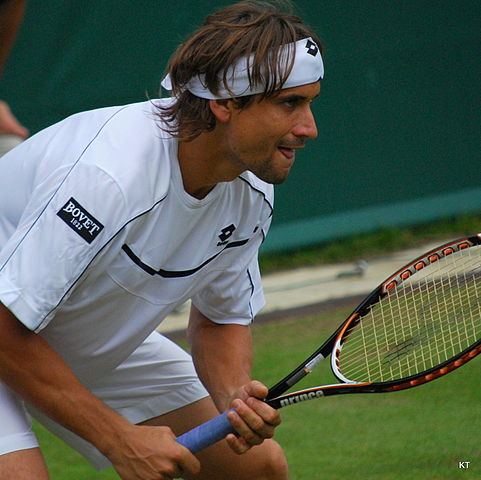
Ferrer finished the 2012 season ranked fifth–behind the Big Four, naturally–for the second year in a row. He wouldn’t play quite as well in 2013, but the combination of good timing and a letdown from some of his rivals meant that a year later, he’d be ranked third, ahead of Murray and Federer. Fortuitous draws, and his usual ability to capitalize on them, meant that he reached his sole major final at Roland Garros, as well as Masters finals in Miami and Paris. He won only two titles (compared to seven the previous year), but he made it to the nine title matches.
Even after his ranking dropped back to a more modest level, Ferrer retained his ability to win regardless of the conditions. Hanging on to the last place in the top ten, he opened his 2015 campaign with a tournament win in Doha, beating Ivo Karlović in a three-tiebreak match in the semis before defeating Tomáš Berdych for the title. He pulled off an unusual trick a month later, taking the trophy in Rio de Janeiro on clay, then winning a hard-court title in Acapulco the following week. In the championship match in Mexico, he didn’t hit a single ace, but the surface switch didn’t faze him. He won half or more of his return points in four of five matches there.
Fans sometimes wrote off Ferrer as little more than a “vulture,” a player who picked up titles only when the field was weak or the draw opened up for him. He certainly won his share of tournaments that way, although defeats of then-7th-ranked Berdych and then-5th-ranked Kei Nishikori in Acapulco don’t really fit that bill. He didn’t stand much of a chance against the Big Four, so he mostly added to his laurels in their absence. Still, in the first years of the 2010s, ranking among the top five–even a distant fifth–required some very high quality tennis.
* * *
Because of his relatively late start and his perennial place in the shadow of the Big Four, fans and pundits were slow to realize just how good Ferrer really was. And even when they embraced the Spaniard’s dogged persistence, few realized how unlikely it was that a player would make a dent in a historically great era the way that he did.
A few years later, Stan Wawrinka would become the poster boy for late-developing stars, winning three majors after his 28th birthday. While Ferrer never posted such signature wins, his belated rise was just as unexpected. After a breakthrough and a year-end #5 finish in 2007, he fell to 17th in the season-ending rankings two years later. No one would’ve been particularly surprised if he had run out the remainder of his career on the fringes of the top ten.
Instead, Ferrer improved to 7th in 2010, his age-28 season. He finished 2011 and 2012 in 5th place, and as we’ve seen, he reached number three in 2013.
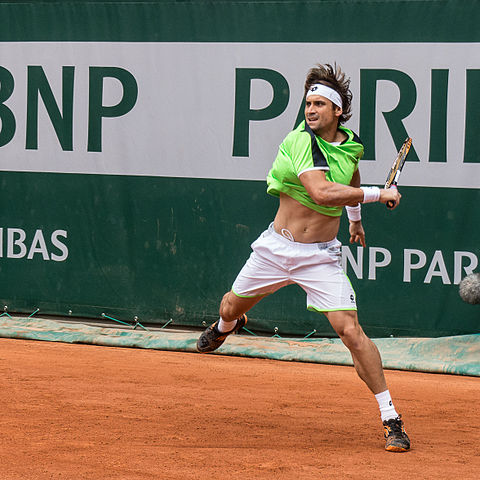
Credit: Yann Caradec
It’s one thing for players to be great into their 30s. It’s uncommon in men’s tennis, but a handful of stars have been able to hang on. What’s so remarkable is when a mid-career player gets so close to the top of the game for the first time. When I analyzed historical aging patterns in late 2013, Ferrer was only the 12th player in 30 years to post a four-year streak of ranking improvements after age 24. Only Ferrer and Wayne Arthurs did it after age 27, and Arthurs started from the much lower perch of #52.
Ferrer continued to defy the aging curve. He wouldn’t leave the top ten until May of 2016, and even that season, when he fell out of the top 20 entirely, he was still the bane of servers worldwide. For the 13th straight season, he won 41% of his return points. Only Djokovic, Nadal, Murray, and David Goffin did better.
* * *
For many fans, all of this is beside the point. Ferrer (they might say) isn’t the kind of player who can be summed up with statistics. Commentators never missed a chance to tell the story of when he quit tennis as a teenager. After a week working on a construction site, he realized tennis had its advantages, and he picked up where he left off–working harder than ever.
The work ethic never budged, and it was evident in every game of his 1,100-plus matches. Of all the men with 20 or more matches logged by the Match Charting Project, he’s one of only three recent players (Diego Schwartzman and Gilles Simon are the others) to average at least five shots per point. Somehow it felt like more, because he put so much into every one of them.
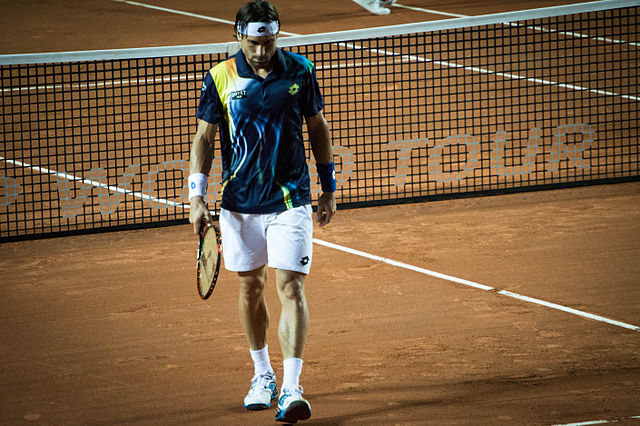
However hard he worked just to get through a routine match, he always seemed to have more in the tank. He played 37 five-setters in his career, winning 23 of them, and he was particularly dangerous when national pride was on the line. He contributed to Spain’s Davis Cup wins in 2008, 2009, and 2011, winning crucial five-set matches against Andy Roddick, Radek Štěpánek, and Juan Martín del Potro, respectively. Sharing a side with Rafael Nadal meant that the team could probably have squeaked through without any Ferrer victories, but you never would’ve guessed it when the Valencian was on court.
In a 2015 interview, Ferrer told Rolling Stone that he thought, in five to ten years, “players like me, around my height, are going to be extinct.” The continued success of Schwartzman and the rising Sebastian Baez suggest otherwise. In a big-serving game that seems to feature more high-bouncing topspin every year, it will never be easy for a smaller guy to hold his own. But it wasn’t easy 20 years ago, either. David Ferrer, of all people, should know that.
